December 19: Christmas with Anne Boleyn
Thank you to historian Dr Owen Emmerson, who is also assistant curator at Hever Castle, the Boleyn family home, for this lovely illustrated (by super-talented Owen!) article "Christmas with Anne Boleyn".
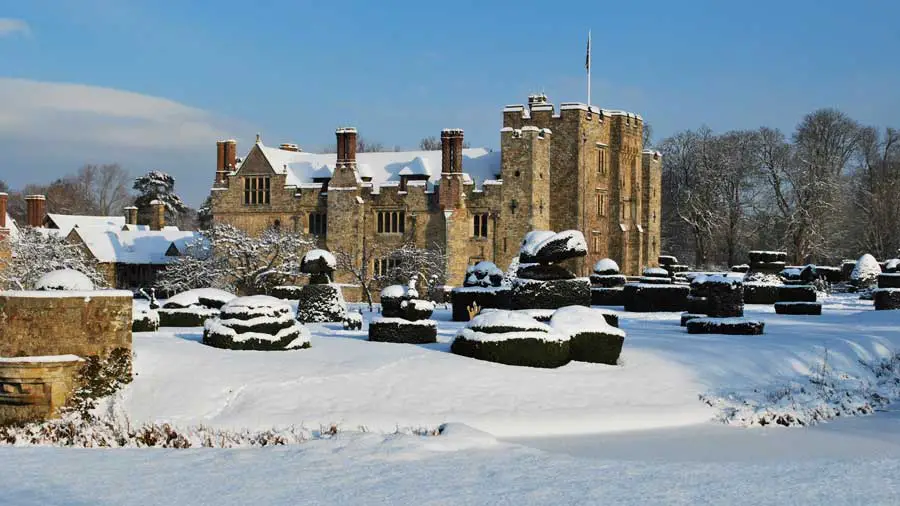
Anne Boleyn no doubt spent many Christmases here at her childhood home of Hever Castle. However, it may surprise you that we can only actually document Anne being at Hever on two occasions at Christmas. Before she rose to fame at the Court of King Henry VIII, our documentation of Anne’s whereabouts is comparatively scant compared to after her debut there in 1522. However, it is highly likely that Hever had long been a family favourite place to spend the festive period. By 1526, the Boleyns were riding high at Court. Thomas Boleyn, one of Henry VIII’s most trusted diplomats, had been created Viscount Rochford and his son, George, had been appointed as the Royal Cupbearer. The Boleyns had much to celebrate during their Christmas at Hever Castle in 1526. It must have been a lavish affair, for more excellent opportunities were on the horizon. King Henry VIII had not only turned his eye toward Anne Boleyn but had resolved to make her his Queen. We know from the many love letters Henry bombarded Anne with here at Hever that she was initially reluctant, even leaving his notes unanswered. Hever emerged as a place of sanctuary during those early years – somewhere Anne could be private and far from the King and Court. Repeatedly, the Boleyns would retreat to their family home of Hever when it was necessary to escape the glare of Court gossip when Henry and Anne’s relationship developed further. These were scandalous times, and the perfectly crenellated walls of Hever Castle held many secrets.
It is easy to imagine the Boleyn’s giving counsel to Anne about the almost unimaginable opportunity that had presented itself. But, contrary to the well-trodden narrative, Thomas Boleyn was far from keen on his daughter’s relationship with the King. Mistresses of the King rarely brought good fortune to families, and a King discarding his Queen to marry a Knight’s daughter was far from commonplace. So as the Boleyns decked the halls of Hever with foliage from the Kentish Weald and lit the great Yule Log felled that year, there would almost certainly have been a mix of emotions flowing through these chambers – excitement as well as apprehension.
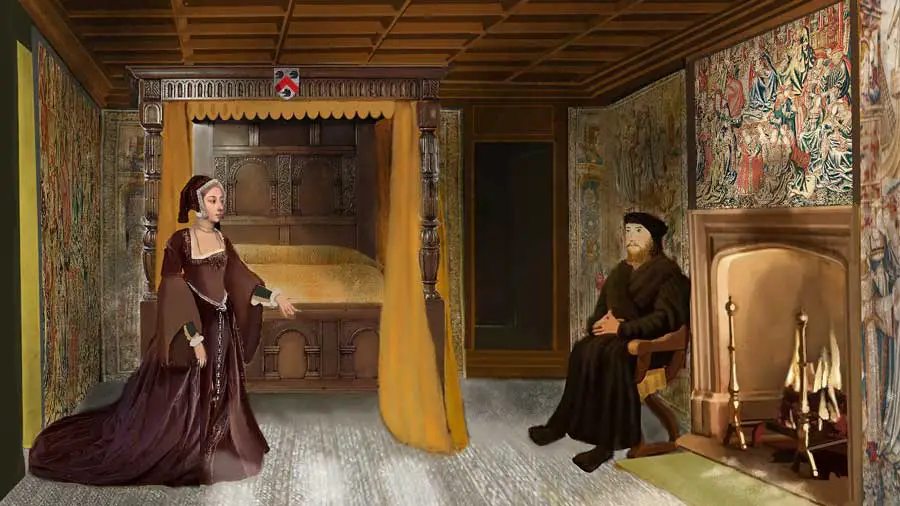
During the Tudor era, gifts were given not on Christmas Day but on New Year’s Day, and as the Boleyns opened their Gifts to one another at Hever, Henry was opening his very publicly at Court. Anne had sent Henry a tiny, bejewelled ship with a droplet diamond and a maiden on board. This costly little trinket was packed full of symbolism, and it would have sent shockwaves through the Court when it was presented publicly to the King. The ship was undoubtedly Anne’s clever way of telling Henry that she (the damsel) was willing to jump aboard Henry’s boat to matrimony. She confirmed that she was prepared to weather the rough seas ahead and become his wife and Queen. Henry sent Anne a reply to Hever Castle, thanking her for her ‘étrenne’ (her new year’s gift) and acknowledging its significance. It always astonishes me that it is possible to read the very letters that Henry sent Anne here, at Hever Castle, and in this letter, he wrote:
For a present so beautiful that nothing could be more so (considering the whole of it), I thank you most cordially, not only on account of the fine diamond and the ship in which the solitary damsel is tossed about, but chiefly for the fine interpretation and the too humble submission which your goodness hath used towards me in this case; for I think it would be very difficult for me to find an occasion to deserve it, if I were not assisted by your great humanity and favour, which I have always sought to seek, and will seek to preserve by all the kindness in my power, in which my hope has placed its unchangeable intention.
The demonstrations of your affection are such, the beautiful mottoes of the letter so cordially expressed, that they oblige me for ever to honour, love, and serve you sincerely, beseeching you to continue in the same firm and constant purpose, assuring you that, on my part, I will surpass it rather than make it reciprocal, if loyalty of heart and a desire to please you can accomplish this.
I beg, also, if at any time before this I have in anyway offended you, that you would give me the same absolution that you ask, assuring you, that henceforward my heart shall be dedicated to you alone. I wish my person was so too. God can do it, if He pleases, to whom I pray every day for that end, hoping that at length my prayers will be heard. I wish the time may be short, but I shall think it long till we see one another.
Henry and Anne had set sail on a voyage that would ultimately lead to a break with the Roman Church, the establishment of a Church of England, and all to place a crown upon Anne Boleyn’s head. That journey set sail here, from Hever Castle, when Anne accepted Henry VIII’s promise of marriage. It was, of course, a fateful decision. She would only spend one more Christmas at Hever.
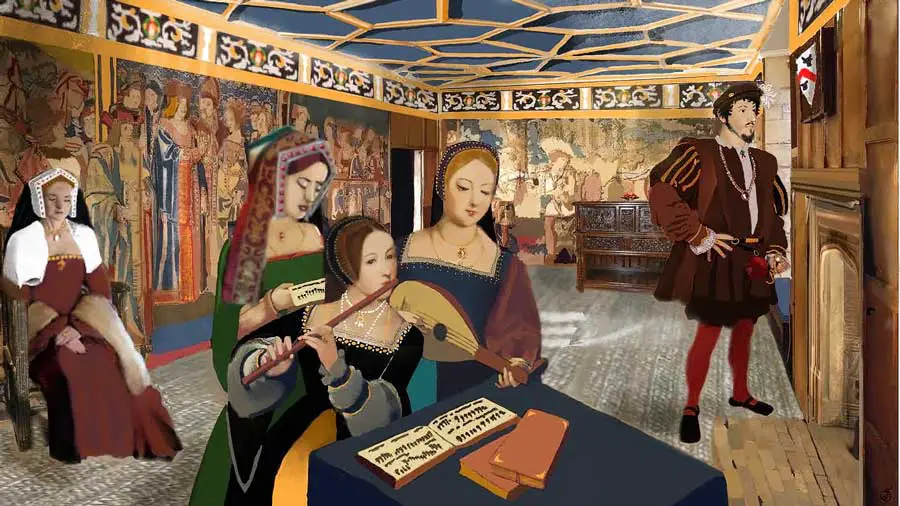
In the run-up to Anne Boleyn’s marriage to King Henry VIII, there were some somewhat awkward Christmases for all to endure at Court, but perhaps none more so than for Queen Catherine of Aragon. During the Christmas festivities of 1530, Anne Boleyn had grown tired of the stalemate surrounding the King’s annulment from his first marriage. So, she made a defiant and bold move against those who opposed her prospective queenship. Anne ordered that the liveries of her household be altered with a new motto that she had most likely learnt from and adapted during her time with Margaret of Austria: Ainsi sera, groigne qui groigne. Anne’s new motto translated to “thus it will be, grudge who grudges.”1 By adopting an imperialist motto into one of her own, Anne was perhaps counterproductively provoking those who opposed her. But, as historian Eric Ives noted, this defiant motto quite likely inspired a carol written by an anonymous hand:
Grudge on who list, this is my lot; Nothing to want if it were not.
My years be young, even as ye see; All things thereto doth well agree; In faith, in face, in each degree, Nothing doth want, as seemeth me, If it were not.
Some men doth say that friends be scarce, But I have found, as in this case, A friend which giveth to no man place But makes me happiest that ever was, If it were not.2
Anne may have been the ‘happiest that ever was,’ but the Christmas of 1531 was a particularly bleak affair at Court. Edward Hall noted that “there was no mirth (fun) because the queen and ladies were absent.’3 Indeed, Anne Boleyn was occupying the Queen’s apartments at Greenwich that year: a move that scandalised the Court. Henry’s attempts to secure an annulment from his marriage to Catherine were stalled in Rome, and his council was also resistant to any moves away from Rome.4 If there were any doubt about Henry’s earnest determination to leave Catherine and marry Anne, then it would undoubtedly have been shattered by the gift-giving ceremony on New Year’s Day that year. Henry gifted Anne a particularly intimate gift: a set of hangings for her bedchamber and bed made from gold and silver cloth embroidered with crimson satin. Anne, in turn, gifted Henry ‘certain dards faytz a la biscayne,’ or boar spears.5 As Eric Ives’ research attests, Henry chose not to provide any gifts to Catherine or her household that Christmas. Catherine, however, had a beautiful and expensive gold cup delivered to her husband. Excruciatingly, Henry refused the gift and sent it back. Perhaps Anne should have realised then quite how cold and ruthless her husband-to-be could be toward those he no longer loved.
The Christmas of 1532 was the year of two wives. In October, Henry and Anne had boldly journeyed to Calais together to win the support of King Francis I, and all the Boleyns of Hever Castle were in attendance. After the triumphant meeting and a farewell to King Francis on 29th October, rough seas had prevented their return. Indeed, Henry and Anne were not seen back at Eltham Palace until 24th November. The reason for their prolonged delay has been much debated over the years. Still, historian Claire Ridgway has convincingly argued that Anne and Henry married secretly during their journey back to the capital.6 Ridgway cites Edward Hall’s chronicle, which clearly states that: “The king, after his return, married privily the lady Anne Boleyn on Saint Erkenwald’s day [14th November], which marriage was kept so secret, that very few knew it, til she was great with child, at Easter after.” It is possible that Henry and Anne underwent a ‘honeymoon’ during their long progress back to London. It is almost certain that Anne and Henry slept together, too, for Princess Elizabeth’s conception date was around the beginning of December. If a secret wedding before Henry had annulled his first marriage wasn’t scandalous enough, he also decided to cohabit with Anne during the Christmas festivities. Henry and Anne underwent a second secret marriage in the New Year on 25th January 1533.7
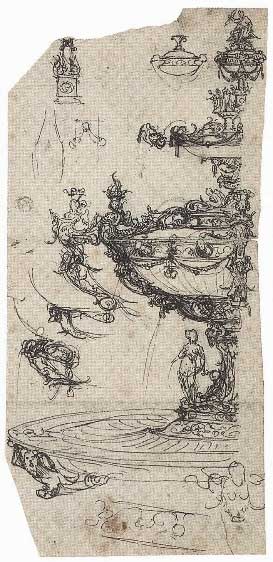
Anne would only be Henry’s Queen for three Christmases. Her Christmas of 1534 was a particularly challenging one, full of sorrow. Anne had been pregnant early in the year, and by July, Henry VIII had ordered a silver cradle in anticipation of the birth. However, the child did not arrive safely into the world, and it is widely believed that Anne miscarried. Nearer to Christmas, Anne’s beloved dog, Purkoy, fell from a window. So close was Anne to her dog that courtiers had to petition the King to break the news to her. In a letter dated 18th December 1534, Thomas Broke wrote the following to Lady Lisle:
…the Queen’s Grace setteth much store by a pretty dog, and her Grace delighted so much in little Purkoy that after he was dead of a fall there durst nobody tell her Grace of it, till it pleased the King’s Highness to tell her Grace of it.”8
Anne’s gift to Henry at New Year 1534 was a stunning table fountain commissioned by the famous court artist Hans Holbein. An excellent description of the fountain survives which demonstrates what a significant piece it was:
A goodly gilt bason, having a rail or board of gold in the midst of the brim, garnished with rubies and pearls, wherein standeth a fountain, also having a rail of gold about it garnished with diamonds; out thereof issueth water, at the teats of three naked women standing at the foot of the same fountain.”9
More remarkable still is the survival of a preparatory sketch by Holbein, which closely corresponds to this item commissioned by Anne Boleyn for Henry VIII. That we can read a description of this gift and see it is a rare and magical thing. It gives us a unique portal into the conspicuous style Anne Boleyn was trying to engender as Queen. It was a treasured item of Henry’s as it appeared in the inventories taken of his possessions upon his death.
Although Anne Boleyn’s Christmases were incredibly lavish during her queenship, if I had to choose one of her Christmases to witness, it would have to be that fated Christmas of 1526 at Hever Castle when she said ‘yes’ to Henry VIII. Unfortunately, the conversations that permeated those festivities are lost to history, but we know that everything changed for Anne, her family and the country after that Christmas at Hever Castle.
Owen and I co-authored the best-selling book "The Boleyns of Hever Castle".
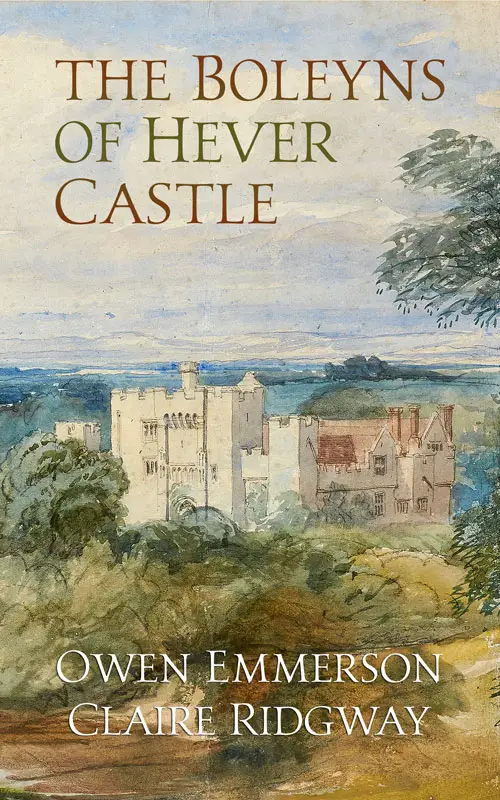
Hever Castle is a picture-postcard fortified manor house nestled in the Kent countryside. It is famous for its links with the Boleyns, an East Anglian gentry family who rose and fell dramatically at the court of King Henry VIII.
In The Boleyns of Hever Castle, historians Owen Emmerson and Claire Ridgway invite you into the home of this notorious family.
Travel back in time to those 77 years of Boleyn ownership. Tour each room just as it was when Anne Boleyn retreated from court to escape the advances of Henry VIII or when she fought off the dreaded 'sweat'. See the 16th century Hever Castle come to life with room reconstructions and read the story of the Boleyns, who, in just five generations, rose from petty crime to a castle, from Hever to the throne of England.
Owen Emmerson and Claire Ridgway have combined their considerable knowledge of the Boleyn family and Hever Castle to create this luxurious book. Packed with history and full-colour images, The Boleyns of Hever Castle will educate and enlighten you.
References
- Ives, E, The Life and Death of Anne Boleyn, 2nd ed. (Wiley-Blackwell, 2004), p.141.
- For the full carol, see Green, R, ‘A Carol of Anne Boleyn by Wyatt’ in Review of English Studies, Issue 25 (1974), pp.437-9. Ives disputes that this carol was penned by Thomas Wyatt and lists it as an anonymous author.
- Hall, E, Chronicle, p.784.
- Ives, E, The Life and Death of Anne Boleyn, p.148.
- Nicolas, N.H (ed), Privy Purse Expenses of King Henry VIII, (1827), p.101.
- See Ridgway, C: https://www.theanneboleynfiles.com/14-november-1532-the-marriage-of-henry-viii-and-anne-boleyn/
- Cox, J.E. (ed), Miscellaneous Writings and Letters of Thomas Cranmer, (Parker Society, 1846), p.246.
- Byrne, M.S.C (ed) The Lisle Letters, Vol 2, (H Savage, 1949), p.331.
- Letters and Papers, vii, 9.